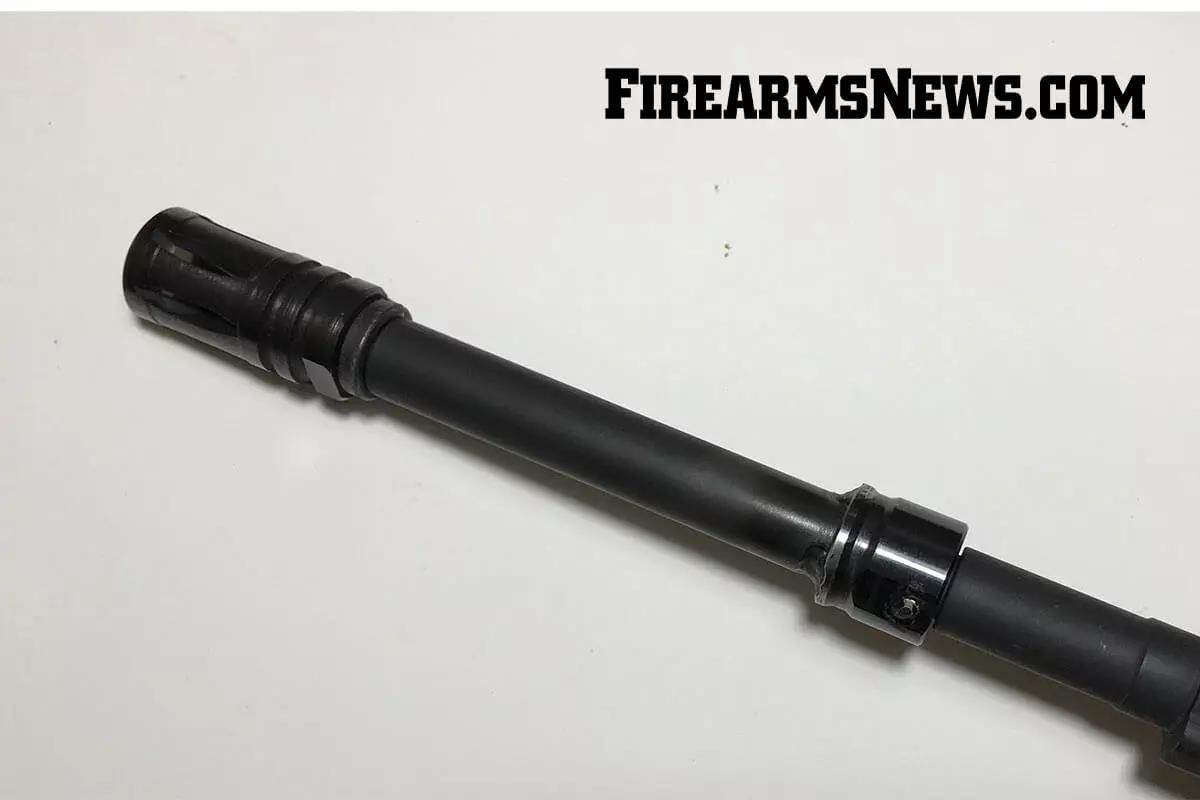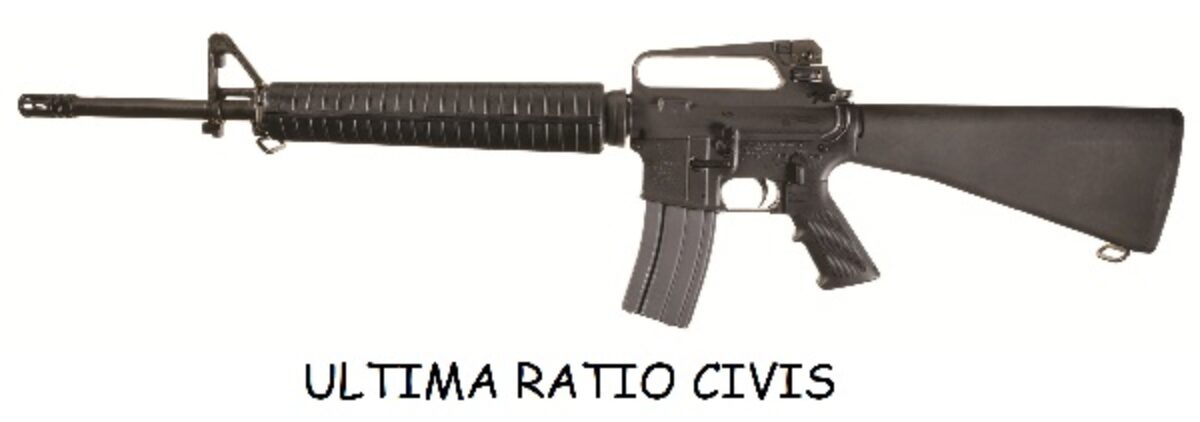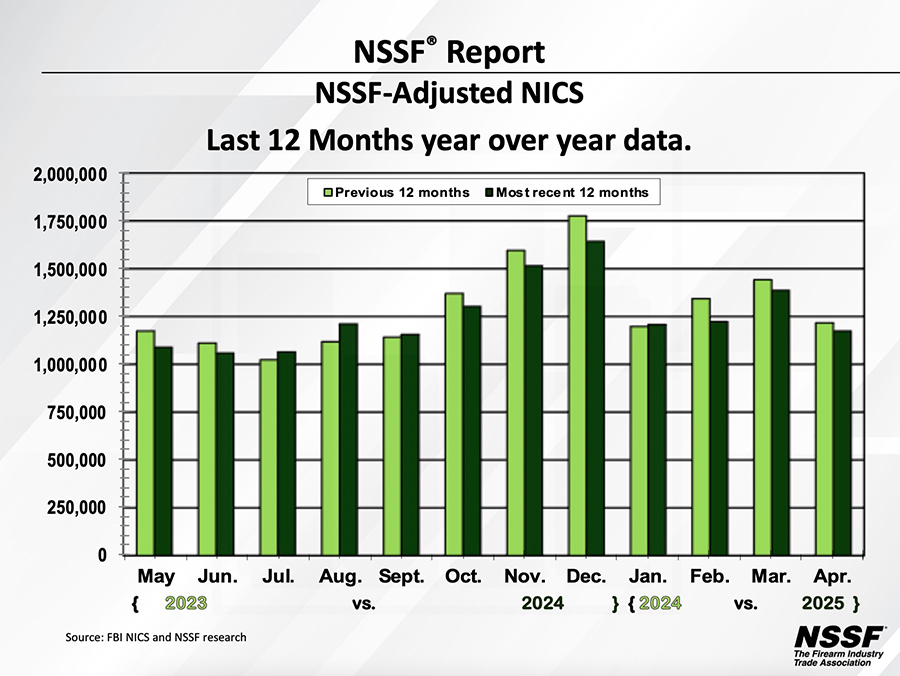ATF Seeks to Criminalize ‘Pinned and Welded’ Muzzle Devices
Are we honestly dealing with rogue agents or a duplicitous administration?

Pinned and welded muzzle device. (Photo Provided by Firearms News)
If you’ve been keeping score on gun rights for as long as I have, chances are you were thrilled to show Kamala the door last November, but your expectations for a pro-Second Amendment Trump administration were tempered at best, and increasingly dismal the deeper you looked into it. If that’s how you felt, I’d say you have a realistic perspective. Believe me, I wish I could survive on words and promises, but years spent on this earth have taught me that the most reliable model for predicting future behavior is past behavior.
Another relevant life lesson is to avoid getting sidetracked by distractions, positive or negative, while maintaining focus on the bigger picture. That’s why it comes as no surprise that the Bureau of Alcohol, Tobacco, Firearms and Explosives (ATF) is once again targeting gun owners with its “now it’s legal, now it’s not” routine, an all too familiar infringement dance for the firearms community.
We’ve been through this together with bump stocks, pistol braces, FRT triggers, and countless others, but it’s once more into the breach, dear friends, once more, this time concerning the long-since approved practice of pining and welding a muzzle device to a barrel to achieve a “permanent” legal length of at least sixteen inches. (Muzzle devices used in pin-and-weld custom gunsmithing include flash hiders, muzzle brakes, barrel extensions, fake suppressors, etc.) Plans for this new wave of attacks on our Constitutionally protected liberties were uncovered recently due to a Freedom of Information Act (FOIA) request from the Second Amendment advocacy group, Gun Owners of America (GOA).
What GOA has uncovered may seem like yet another rogue agent working against the promises of United States Attorney General Pam Bondi and her big, beautiful boss, the President, but as a subordinate who can easily be fired, something the Trump administration is known for being quite good at, can we really call these actions rogue if the agent still has a job? Ahhh, therein lies the conflict. Suppose our anti-American, anti-Constitution agent still wears an ATF badge. In that case, this person is acting at the behest of superiors, who start to seem either apathetic or straight-up two-faced at some point.
Well, surprise, surprise, she does continue to report for duty at the ATF, and the treasonous little snake is no stranger when it comes to attacking gun rights or being a complete imbecile. So, don’t bother getting up, and please, give a not-so-warm welcome to Eve E. Eisenbice, the subversive reptile behind such hits as claiming a water bottle could be considered a firearm, classifying a cheek rest as a stock in order to charge a gun owner under the National Firearms Act of 1934 (NFA), and testifying in court that possession of pillows and potatoes can potentially count as suppressors. I know my sarcasm and abrasive disposition towards these traitors might make you wonder if I’m simply attributing ridiculous hyperbole to Eisenbice’s “career,” but I’m not. She did those things, and really is that stupid and dishonest.
So, how did her latest mastery of the perfidious arts come about? Great question! The ATF’s Firearms Technology Industry Services Branch (FTISB) was involved in a case concerning a Beretta pistol imported by Amchar Wholesale. The firearm in question used the standard blind pin method to pin and weld the muzzle device to the barrel. This involves installing the device, drilling a small hole in it that penetrates slightly into the barrel’s threads, inserting a steel pin to prevent the device from being unscrewed, and then welding over the pin to secure it in place.
What the ATF did in this case was place the pistol in a bench vise, attach a breaker bar, and apply an obscene amount of torque. What this accomplishes causes permanent damage that will require the firearm to be rebarreled to function once again as it was meant to. That is precisely what the agency did. They broke the gun in order to say that the muzzle device did not meet the permanent requirement.
Unfortunately, this is the best and safest method to permanently affix a muzzle device, as welding its circumference directly to the barrel can damage the heat treatment, raising safety concerns due to the likelihood of a catastrophic failure. And let’s be clear, any monkey with a breaker bar can destroy a firearm the way the ATF did. It’s simple physics. But the fact remains that a pinned and welded muzzle device cannot be removed without modification or destruction of the barrel’s integrity.
You may be reading this, wondering if we haven’t yet found the right loophole to avoid having a barrel slightly shorter than sixteen inches not count as a short-barreled rifle (SBR) under the NFA, requiring an onerous paperwork and approval process along with an illegal tax stamp on a Constitutional right to the tune of $200. The problem is that this pin-and-weld method isn’t a loophole. It is a lawfully approved and widely used practice, as confirmed by a 2006 letter from the ATF.
If the ATF continues to be allowed to run roughshod over law-abiding gun owners like they have ad nauseam, the results could be quite terrifying. Legally compliant rifles could become illegally possessed NFA items overnight, a charge that carries a hefty prison sentence. This is a horrifying manner of destroying the lives of Americans and their families at the treacherous impulse of dishonest government employees and agencies, and it’s all happening under the noses of senior officials like Pam Bondi, Daniel P. Driscoll, acting director of the ATF, and President Trump himself.
What’s worse is that the solution is so simple. It involves little more than a flick of the pen and less than a minute of conversation. What is that solution? Fire this loser. And I mean 100% out on her ass. Do not pass go. Do not collect $200. A fortuitous tax stamp reference, perhaps? No benefits, no pension, just a straight march to the unemployment line and a good riddance salute. So why the crickets from our supposed Second Amendment crusading leaders? That can only be answered one way if they don’t take swift action. They are complicit, by order or by turning a blind eye. It doesn’t matter which one, because either scenario is a death knell for any more fake talk from the administration and the Department of Justice (DOJ).
My final thoughts on the subject concern the fact that this conversation should never have reached the ears of any American. First of all, the Second Amendment is neither long, convoluted, nor complex. It requires no interpretation from the literate. Second, for a barrel to meet the arbitrary sixteen-inch legal rifle length with a pinned and welded muzzle device, it typically needs to be between 13.9 inches and 14.5 inches. Is 2.1 inches or any such measurement really what we’re spending millions to litigate and destroying lives over? The NFA itself is a significant stain on the integrity of the American government and the oaths taken by politicians and judges to preserve and defend the Constitution. As long as it exists, alongside all other gun laws on the books, including the Gun Control Act of 1968 (GCA) and the Hughes Amendment in 1986, these charlatans will continue to soil the sacrifices of so many brave Americans who paid the ultimate price for our freedom and liberty.




